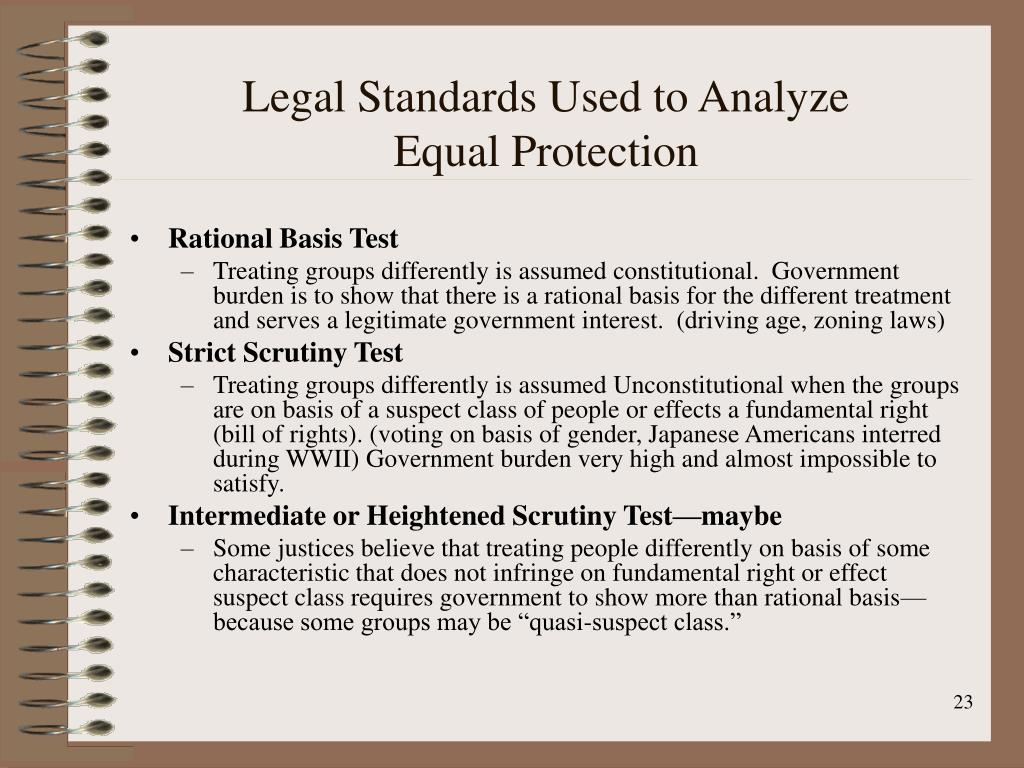
The maintenance of a militia, the individual right to a handgun for self-defense, and reasonable regulation can all be reconciled under intermediate scrutiny. courts apply the strict scrutiny standard in two contexts: when a fundamental constitutional right is infringed, particularly those found in the Bill of Rights and those the court has deemed a fundamental right protected by the Due Process Clause or 'liberty clause' of the 14th Amendment, or. Hogan as a warning against strict scrutiny, not an invitation for its application to firearm regulations. Until the Supreme Court clarifies the scope of the Second Amendment and the appropriate standard of review, courts should view Kolbe v. Equal Protection Clause are rational basis review, intermediate scrutiny, and strict scrutiny. This note examines the relationship between the right to bear arms as an individual right, the ongoing debate over firearm regulations in society, and the appropriate standard of review courts should utilize in evaluating legislation that implicates Second Amendment rights. plurality opinion abandoned the strict scrutiny Roe v. If Heller marked a dramatic development in Second Amendment jurisprudence, Kolbe revealed courts’ difficulties in addressing firearm regulations absent a defined standard of review.

This proved to be contentious and short-lived however, as just one year after its initial ruling and in a significant turn of events, the Fourth Circuit released an en banc decision, vacated the appellate court panel opinion, applied intermediate scrutiny, and declared semi-automatic assault weapons beyond Second Amendment protection. Hogan the Fourth Circuit became the first court to apply strict scrutiny to a Maryland law regulating semi-automatic assault rifles. Absent direction from the Supreme Court, many lower courts reacted by applying intermediate scrutiny, but in Kolbe v. Thus, the Heller decision opened the floodgates for legal challenges to firearm regulations across the nation. While pronouncing the individual right to a gun as fundamental, the Court declined to define an appropriate standard of review to assess firearm regulations.

The law must have an important (rather than compelling) state interest and must be substantially related to achieving the interest. Heller, the Supreme Court of the United States declared that the Second Amendment protects an individual’s right to a firearm outside the context of a militia. Unlike strict scrutiny, a classification that falls under intermediate scrutiny has a lower overall threshold to justify a law that affects the class. A militia right or an individual right? In District of Columbia v.


 0 kommentar(er)
0 kommentar(er)
